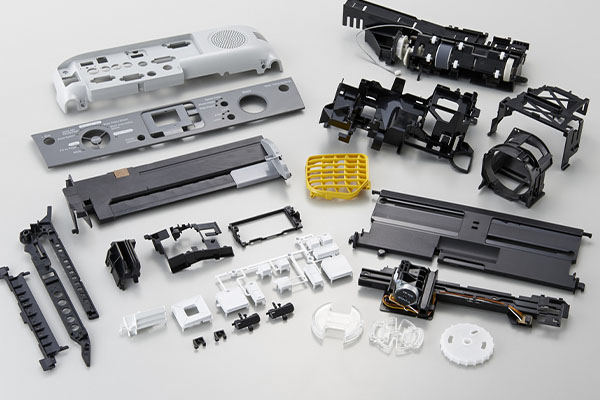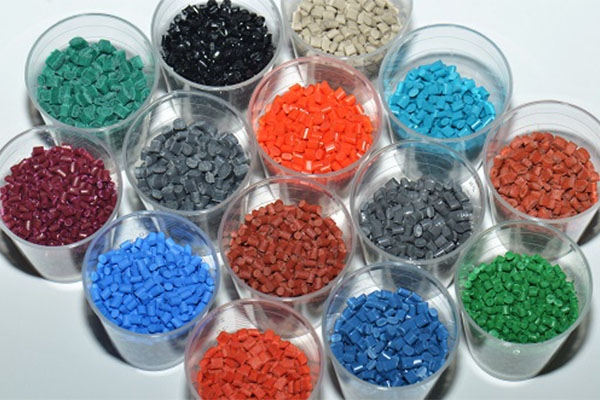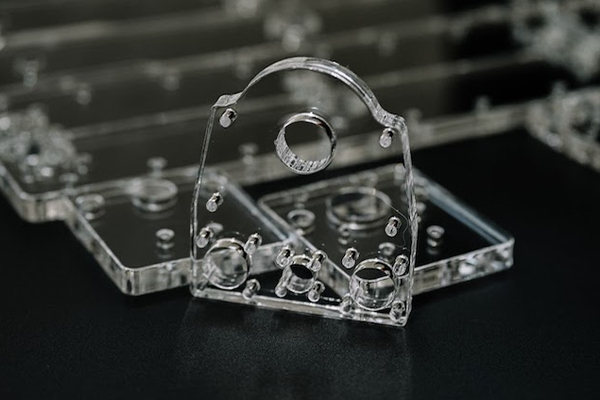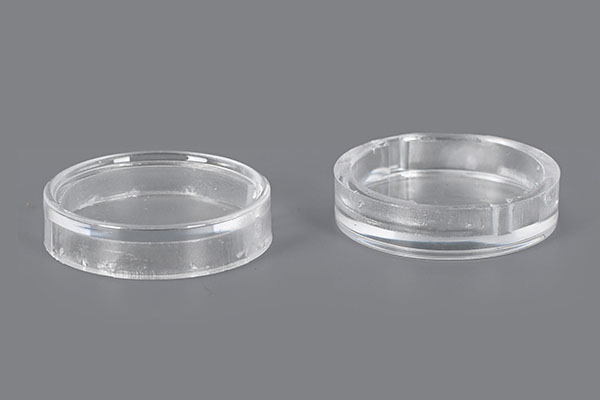Plastic Moulding: Top 10 Injection Molding Materials
Plastic moulding materials come in a variety of forms, from standard polymers to exotic plastics and mixes of polymers. There are hundreds of varieties of plastic resins available, and each one has unique processing needs and end-use characteristics. Additionally, there are several brand names and grades of the same plastic moulding material, including resin varieties with additives like glass or carbon fibers.
It might be intimidating to select the ideal material for your project when there are so many options. Our professionals are prepared to assist you in moving your project swiftly from design to production, whether it requires plastic moulding components for the automotive sector or something else entirely.
Additionally, have a look at our plastic moulding services if you need assistance with any of your injection molding tasks. Please read on the top 10 plastic moulding materials to find out more.

The Top 10 Materials for Plastic Moulding
Plastic moulding frequently employs the following commonly used materials:
- Acrylic (PMMA)
- Acrylonitrile Butadiene Styrene (ABS)
- Nylon (Polyamide, PA)
- Polycarbonate (PC)
- Polyethylene (PE)
- Polyoxymethylene (POM)
- Polypropylene (PP)
- Polystyrene (PS)
- Thermoplastic Elastomer (TPE)
- Thermoplastic Polyurethane (TPU)
This article explores their distinctive properties, draws comparisons with alternative materials, and delves into their diverse applications in plastic moulding. Additionally, it includes information on various grades and brand names for each material.”

Acrylic (PMMA)
Acrylic, also known as PMMA (poly(methyl methacrylate)), is a robust, transparent thermoplastic that offers a lightweight, shatter-resistant alternative to glass. It boasts excellent optical clarity, allowing a high percentage of light to pass through. Acrylic is resistant to ultraviolet (UV) light and various weather conditions. However, it is susceptible to solvents and staining by greases and oils. While it can withstand exposure to water, acrylic is prone to stress cracking under heavy loads.
Applications: Acrylic injection molding finds applications in windows, greenhouses, solar panels, bathroom enclosures, and other transparent components for architectural, lighting, and outdoor uses.
Grades and Brands: PMMA plastics come in general-purpose and specialty grades. These include general-purpose acrylic for everyday products, sign-grade acrylic for outdoor signage with excellent light transmission, and marine-grade acrylic for continuous water exposure. Common brand names for acrylic plastics include Trinseo PLEXIGLAS® and DuPont LUCITE®, each offering unique features such as high heat resistance and optical clarity.

Acrylonitrile Butadiene Styrene (ABS)
ABS, characterized by its relatively low melting point, is easy to mold. This opaque polymer supports the use of colorants, textures, and various surface finishes. Its butadiene content imparts exceptional toughness, even at low temperatures, while its styrene content gives a glossy finish to injection-molded parts. However, ABS lacks strong resistance to UV, water, and weather. It is not suitable for outdoor applications and generates significant smoke when burned. Additionally, ABS provides poor resistance to high friction, unlike nylon.
Applications: ABS injection molding is used to produce a wide range of plastic moulding parts, including keyboard keys, protective headgear, electrical outlet wall plates, automotive components like wheel covers, consumer goods, sports equipment, and industrial fittings.
Grades and Brands: Notable brands of ABS include Samsung Starex®, Toray Toyolac®, BASF Terluran®, and Ineos Lustran®.
Nylon Polyamide (PA)
Nylon, a synthetic polyamide (PA), blends toughness with high heat resistance, remarkable abrasion resistance, good fatigue resistance, and noise-dampening qualities. Although it lacks inherent flame resistance, flame-retardant versions of nylon are readily available. Moreover, while nylon can be vulnerable to sunlight-induced degradation, the addition of a UV stabilizer can enhance its outdoor performance.
Properties: Compared to other plastics, nylon exhibits limited resistance to strong acids and bases. It falls short in strength when compared to polypropylene and doesn’t match the impact resistance of polycarbonate. Injection molding of nylon can be challenging due to its susceptibility to shrinkage and potential issues with mold filling.
Applications: Nylon injection molding finds use in the creation of robust mechanical components like bearings, bushings, gears, and slides. It is also employed in casings, snap-fit closures, threaded inserts, kinetic parts, jigs, fixtures, and applications requiring a low coefficient of friction to combat high-friction and wear.
Grades and Brands: Nylon is available in four primary grades, each with slightly different mechanical properties. These include Nylon 11 for outdoor applications with enhanced resistance to dimensional changes, Nylon 12 with the lowest melting point and resistance to water absorption, Nylon 46 featuring the highest operating temperature, and Nylon 66 known for its high melting point and resistance to acids used in chemical processing. Additionally, nylon can be reinforced with glass fibers for increased mechanical strength.
Polycarbonate (PC)
Polycarbonate is a durable, lightweight, and naturally transparent moulding material. It offers excellent optical properties for effective light transmission, even when pigmented, without compromising its color or strength. Although not scratch-resistant, polycarbonate surpasses glass in terms of strength and overall durability.
Properties: Injection-molded polycarbonate is sometimes chosen over acrylic due to its ability to maintain physical properties over a broader temperature range. However, it demands higher processing temperatures, which can result in higher molding costs. Nevertheless, polycarbonate delivers precise dimensional control, thanks to its consistent and predictable shrinkage, enabling tighter tolerances.
Applications: Polycarbonate injection molding is applied in a variety of settings, including machinery guards, clear and tinted windows, diffusers, and light pipes for LEDs, as well as clear molds for urethane and silicone casting. It’s important to note that polycarbonate contains bisphenol A (BPA), making it unsuitable for food preparation or storage.
Grades and Brands: Polycarbonate plastic can be reinforced with glass and is available in grades that contain a relatively small percentage of stainless steel fiber. Well-known brands include SABIC Lexan® (offering flame-resistant versions) and Covestro Makrolon® (known for its glass-like transparency).

Polyethylene (PE)
Polyethylene stands as the most widely used plastic moulding material globally, offering a range of commercial polymers that can be chosen based on their density. High-density polyethylene (HDPE) and low-density polyethylene (LDPE) both exhibit chemical resistance, but they differ in terms of hardness, flexibility, melting point, and optical transparency.
Properties: PE plastics encompass polyethylene terephthalate (PET, PETE), a material not defined by its density. Similar to LDPE, PET can achieve a glass-like clarity, yet designers have the option to select PET or PETE grades with varying levels of optical transparency. All three, HDPE, LDPE, and PET, are moisture and chemical-resistant, but LDPE is softer and more flexible than HDPE, which is an opaque material.
Applications: Due to their limited UV resistance and inability to withstand high service temperatures, polyethylene injection molding is often restricted to indoor applications. Common products include housewares, toys, food containers, and automotive parts.
Grades and Brands: PE plastic moulding materials are categorized by numerical grades, where higher numbers generally indicate higher densities. For instance, HDPE 500 has a higher density than HDPE 300, and both have a higher density than LDPE, which also uses a grading system. Prominent suppliers of PE for engineering applications (as opposed to general-purpose) include BASF and DuPont.
Polyoxymethylene (POM)
Polyoxymethylene, commonly known as acetal, represents an engineering plastic that combines exceptional rigidity with thermal stability and boasts a low coefficient of friction. It exhibits low water absorption and strong chemical resistance. In its natural state, POM plastics are opaque and white.
Properties: In its pure form, acetal has low impact strength and a high rate of thermal expansion. However, POM can be reinforced with fiberglass or minerals to enhance strength and stiffness. Compounds reinforced with both materials offer a well-balanced set of mechanical properties. Due to its lack of resistance to sunlight, outdoor applications for injection-molded POM are limited.
Applications: Thanks to its low coefficient of friction, injection-molded POM finds use in bearings, gears, conveyor belts, pulley wheels, fasteners, eyeglass frames, knife and firearm components, lock systems, and high-performance engineering parts.
Grades and Brands: Acetal plastics come in two primary types: homopolymers, offering higher hardness and tensile strength, and POM copolymers. Neither type can meet fire resistance standards like UL 94, and both experience relatively high shrinkage during plastic moulding. Notable brand names for POM plastics include DuPont Delrin® and Ensinger TECAFORM®.
Polypropylene (PP)
Polypropylene, often abbreviated as PP, is the world’s second most commonly used plastic. It boasts good chemical resistance, retains its shape even after torsion or bending, features a high melting point, and remains unaffected by moisture or water exposure. This recyclable plastic moulding material is sometimes referred to as “polypro.”
Properties: Despite its advantages, polypropylene is susceptible to degradation from UV light and is highly flammable. At temperatures exceeding 100°C (212°F), PP dissolves into aromatic hydrocarbons, like benzene and toluene, which can be harmful to humans. Polypropylene is also challenging to bond and paint.
Applications: Polypropylene injection molding finds use in various applications, including toys, storage containers, sporting goods, packaging, appliances, and power tool bodies.
Grades and Brands: Pure polypropylene is considered a commodity plastic moulding material with the lowest density, while high crystalline polypropylene (HcPP) is filled with glass fibers for enhanced rigidity. Mitsubishi Chemical Advanced Materials’ Semitron® is a prominent brand associated with high crystalline polypropylene.
Polystyrene (PS)
Polystyrene plastics are lightweight, cost-effective, resistant to moisture, and inhibit bacterial growth. They also offer good chemical resistance to diluted acids and bases, along with excellent resistance to gamma radiation, which is used for sterilizing medical devices.
Properties: There are two main types of polystyrene: general-purpose polystyrene (GPPS) and high-impact polystyrene (HIPS). GPPS is brittle and exhibits less dimensional stability than HIPS, which is compounded with butadiene rubber to enhance its material properties. GPPS has a glass-like clarity, whereas HIPS is opaque.
Applications: Polystyrene injection molding finds applications in the medical, optical, electrical, and electronic fields. HIPS, with its higher impact strength, is often used in appliances and equipment, while injection-molded GPPS is employed for plastic moulding toys, cases, containers, and trays.
Grades and Brands: Polystyrene can be reinforced with glass for added strength or co-polymerized with acrylic to enhance clarity and improve chemical and UV stability. Prominent brand names include American Styrenics PolyRenew® and BASF Polystyrol®.
Thermoplastic Elastomer (TPE)
TPE, short for Thermoplastic Elastomer, is a versatile blend of plastic and rubber materials. It undergoes plastic-like processing while delivering rubber-like properties and performance. Often referred to as thermoplastic rubber (TPR), TPE exhibits the ability to stretch to moderate elongations and, upon the removal of stress, returns to its original shape. TPE can also be recycled multiple times.
Properties: In comparison to liquid silicone rubber (LSR), TPE is easier and more cost-effective to mold. However, TPE is susceptible to creep under sustained pressures, which results in permanent deformation. It also loses its rubbery properties at elevated temperatures and tends to be more expensive than some other plastic moulding materials.
Applications: TPE injection molding finds use in a variety of applications, including footwear, medical devices, auto parts, and pet products. Automotive uses encompass weather seals and shock dust boots, while medical applications include breathing tubes, valves, catheters, and ventilation masks.
Grades and Brands: Generic classes of commercial TPEs are defined by ISO 18064. Various manufacturers offer TPE products under different brand names, including Teknor Apex Telcar®, Kraiburg HIPEX®, and Dynaflex™ from Avient (formerly PolyOne). TPEs suitable for healthcare applications are also available.
Thermoplastic Polyurethane (TPU)
TPU, which is often distinguished separately due to its popularity, is a form of TPE with rubber-like elasticity. It serves as a replacement for hard rubber, thanks to its higher durometer. Injection-molded TPU exhibits good load-bearing capabilities and can endure exposure to ozone.
Properties: Compared to TPE, TPU offers superior resistance to extreme temperatures and chemicals. However, some TPU materials may be too hard for certain injection-molded parts, and they tend to be more expensive, in part because a drying process is required before processing.
Applications: TPU injection molding is applied in various fields, including footwear, gaskets, caster wheels, sporting goods, and the manufacturing of cases or enclosures for electronics and medical devices. In medical applications, TPUs are occasionally employed as a substitute for polyvinyl chloride (PVC), a plastic known to cause skin irritation.
Grades and Brands: Thermoplastic polyurethanes are available in commercial, medical, and industrial grades. They fall into three primary classes: polyester, polyether, and polycaprolactone. Manufacturers offer trademarked TPU products, such as those from Lanxess, Lubrizol, Texin, and Ultralast.
More Materials for Plastic Moulding
The most popular polymers for plastic moulding are those that are covered above, along with unique plastics and polymer mixes that we are able to injection mold for you.
With so many possibilities available, our production and design professionals can assist you in selecting the best plastic moulding resin for your project. You will receive design for manufacturing (DFM) along with your price.
Furthermore, we provide customized, modified, or unique plastic moulding materials to meet your unique needs.
Let us embrace the new conversation, with your next project plan !
Get a free quote and design analysis today.
We’ll reply to you within 6 working hours.
We respect your privacy.
+86 139 2927 4777 (WhatsApp, Wechat)
